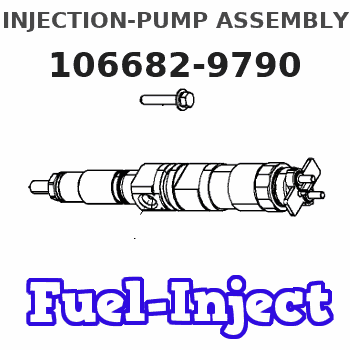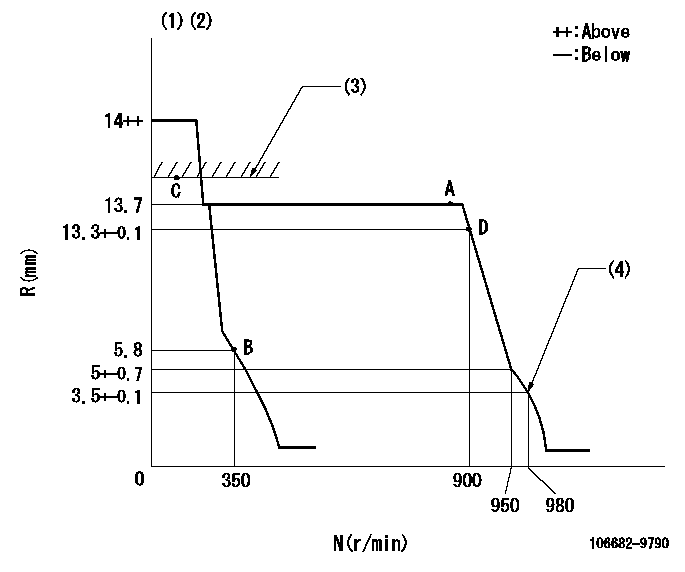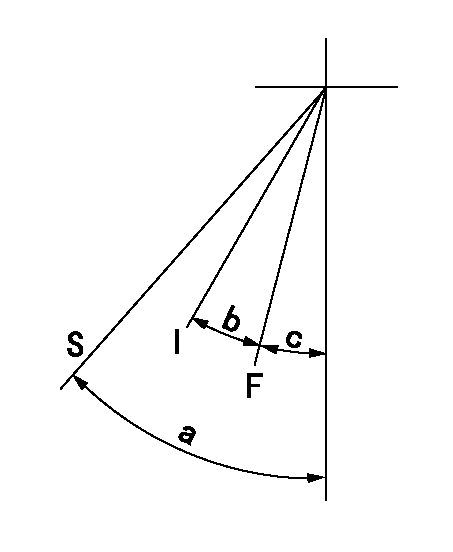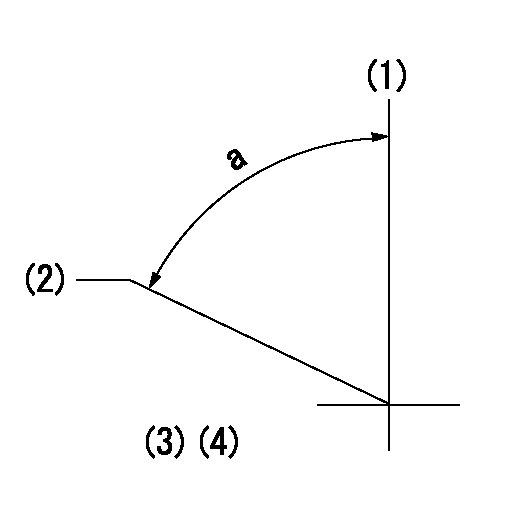Information injection-pump assembly
ZEXEL
106682-9790
1066829790
YANMAR
12666451021
12666451021

Rating:
Service parts 106682-9790 INJECTION-PUMP ASSEMBLY:
1.
_
5.
AUTOM. ADVANCE MECHANIS
7.
COUPLING PLATE
8.
_
9.
_
10.
NOZZLE AND HOLDER ASSY
11.
Nozzle and Holder
12.
Open Pre:MPa(Kqf/cm2)
13.
NOZZLE-HOLDER
14.
NOZZLE
15.
NOZZLE SET
Include in #1:
106682-9790
as INJECTION-PUMP ASSEMBLY
Cross reference number
ZEXEL
106682-9790
1066829790
YANMAR
12666451021
12666451021
Zexel num
Bosch num
Firm num
Name
Calibration Data:
Adjustment conditions
Test oil
1404 Test oil ISO4113 or {SAEJ967d}
1404 Test oil ISO4113 or {SAEJ967d}
Test oil temperature
degC
40
40
45
Nozzle and nozzle holder
105780-8130
Bosch type code
EFEP215A
Nozzle
105780-0050
Bosch type code
DN6TD119NP1T
Nozzle holder
105780-2090
Bosch type code
EFEP215
Opening pressure
MPa
17.2
Opening pressure
kgf/cm2
175
Injection pipe
Outer diameter - inner diameter - length (mm) mm 8-4-1000
Outer diameter - inner diameter - length (mm) mm 8-4-1000
Overflow valve
131424-7120
Overflow valve opening pressure
kPa
255
221
289
Overflow valve opening pressure
kgf/cm2
2.6
2.25
2.95
Tester oil delivery pressure
kPa
157
157
157
Tester oil delivery pressure
kgf/cm2
1.6
1.6
1.6
Direction of rotation (viewed from drive side)
Right R
Right R
Injection timing adjustment
Direction of rotation (viewed from drive side)
Right R
Right R
Injection order
1-4-2-6-
3-5
Pre-stroke
mm
4.1
4.05
4.15
Beginning of injection position
Drive side NO.1
Drive side NO.1
Difference between angles 1
Cal 1-4 deg. 60 59.5 60.5
Cal 1-4 deg. 60 59.5 60.5
Difference between angles 2
Cyl.1-2 deg. 120 119.5 120.5
Cyl.1-2 deg. 120 119.5 120.5
Difference between angles 3
Cal 1-6 deg. 180 179.5 180.5
Cal 1-6 deg. 180 179.5 180.5
Difference between angles 4
Cal 1-3 deg. 240 239.5 240.5
Cal 1-3 deg. 240 239.5 240.5
Difference between angles 5
Cal 1-5 deg. 300 299.5 300.5
Cal 1-5 deg. 300 299.5 300.5
Injection quantity adjustment
Adjusting point
A
Rack position
13.7
Pump speed
r/min
850
850
850
Each cylinder's injection qty
mm3/st.
363
352.1
373.9
Basic
*
Fixing the lever
*
Injection quantity adjustment_02
Adjusting point
B
Rack position
5.8+-0.5
Pump speed
r/min
350
350
350
Each cylinder's injection qty
mm3/st.
25.5
22.9
28.1
Fixing the rack
*
Injection quantity adjustment_03
Adjusting point
C
Rack position
-
Pump speed
r/min
100
100
100
Average injection quantity
mm3/st.
345
345
375
Fixing the lever
*
Rack limit
*
Test data Ex:
Governor adjustment

N:Pump speed
R:Rack position (mm)
(1)Target notch: K
(2)Tolerance for racks not indicated: +-0.05mm.
(3)RACK LIMIT
(4)Set idle sub-spring
----------
K=11
----------
----------
K=11
----------
Speed control lever angle

F:Full speed
I:Idle
S:Stop
----------
----------
a=57deg+-3deg b=24deg+-5deg c=17deg+-5deg
----------
----------
a=57deg+-3deg b=24deg+-5deg c=17deg+-5deg
Stop lever angle

N:Pump normal
S:Stop the pump.
----------
----------
a=20deg+-5deg b=53deg+-5deg
----------
----------
a=20deg+-5deg b=53deg+-5deg
Timing setting

(1)Pump vertical direction
(2)Coupling's key groove position at No 1 cylinder's beginning of injection
(3)-
(4)-
----------
----------
a=(60deg)
----------
----------
a=(60deg)
Information:
Proper operation and maintenance are key factors in obtaining the maximum life and economy of the engine. Normal operating temperatures are between -40°C (-40°F) and 120°C (248°F). Following the directions in this Manual will lower operating costs.The time needed for the engine to reach the normal mode of operation is usually less than the time taken for a walk-around inspection of the engine.After the engine is started and the cold low speed operation is completed, the engine can be operated at rated speed and low power. The engine will reach normal operating temperature faster when operated at low power demand than when idled at no load. Typically the engine should reach operating temperature in a few minutes.The electronic governor/control (ECM) system provides complete engine speed governing and controls cold start mode strategies, torque shaping, smoke limiting, system diagnostics and communication data links to monitor performance and diagnostic information. Warning outputs are provided for low oil pressure, low boost pressure, high coolant temperature and low coolant level with a diagnostic lamp.Electronic Control System Operation
The 3408 & 3412 electronically controlled governor functions like a mechanical governor in the mid-speed operating range. The governor has a programmable low idle rpm of 600 to 750 rpm, regardless of load. The governor eliminates most of the overrun at high idle that is experienced with a mechanical governor.During the cranking cycle, the safety shutoffs are inoperative, and will not allow a low oil pressure shut down. When oil pressure reaches a safe level, the safety circuit is armed by the arming relay. High water temperature or low oil pressure will now stop the engine and prevent major damage.If an unsafe engine condition exists, a sending unit completes the circuit to the safety relay and locking relay. The safety relay closes the fuel supply valve and the engine stops. The locking relay insures that the circuit to the safety relay is complete, even if the remote contacts open.Before restarting any unit which has been shut down by the safety circuit, the cause must be determined and corrected. The safety circuit must be reset by moving the start selector switch to the OFF position.Operating Driven Equipment Without Load
* Operate the engine at LOW IDLE. After normal oil pressure is reached and the jacket water temperature gauge begins to rise, the engine may be operated at full load.* If equipped with auxiliary driven equipment: To get the driven equipment in motion, use a smooth, easy engagement without increasing engine speed above low idle or slipping the clutch. Engage the clutch smoothly. It is not necessary to advance the throttle to get the driven equipment moving in most instances.
DO NOT allow the engine rpm to exceed 2450 rpm, or engine damage could result.Operation of the engine at 2450 rpm or above will cause the DIAGNOSTIC lamp to come on and a fault to be logged.
Operating Driven Equipment With Load
Always increase engine speed before increasing load.
1. Move the governor control lever to half engine speed. Begin operating the engine
The 3408 & 3412 electronically controlled governor functions like a mechanical governor in the mid-speed operating range. The governor has a programmable low idle rpm of 600 to 750 rpm, regardless of load. The governor eliminates most of the overrun at high idle that is experienced with a mechanical governor.During the cranking cycle, the safety shutoffs are inoperative, and will not allow a low oil pressure shut down. When oil pressure reaches a safe level, the safety circuit is armed by the arming relay. High water temperature or low oil pressure will now stop the engine and prevent major damage.If an unsafe engine condition exists, a sending unit completes the circuit to the safety relay and locking relay. The safety relay closes the fuel supply valve and the engine stops. The locking relay insures that the circuit to the safety relay is complete, even if the remote contacts open.Before restarting any unit which has been shut down by the safety circuit, the cause must be determined and corrected. The safety circuit must be reset by moving the start selector switch to the OFF position.Operating Driven Equipment Without Load
* Operate the engine at LOW IDLE. After normal oil pressure is reached and the jacket water temperature gauge begins to rise, the engine may be operated at full load.* If equipped with auxiliary driven equipment: To get the driven equipment in motion, use a smooth, easy engagement without increasing engine speed above low idle or slipping the clutch. Engage the clutch smoothly. It is not necessary to advance the throttle to get the driven equipment moving in most instances.
DO NOT allow the engine rpm to exceed 2450 rpm, or engine damage could result.Operation of the engine at 2450 rpm or above will cause the DIAGNOSTIC lamp to come on and a fault to be logged.
Operating Driven Equipment With Load
Always increase engine speed before increasing load.
1. Move the governor control lever to half engine speed. Begin operating the engine